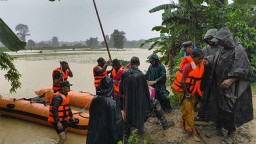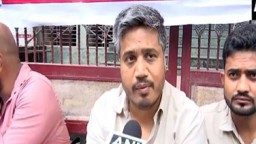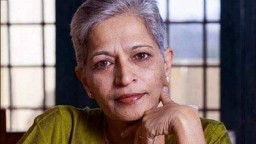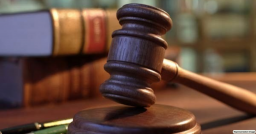Latest News
‘VIKSIT BHARAT’

The history of administration, as also of the Civil services in India can be, and is, traced back to ancient times, especially to the Mauryan period (approximately 322 to 185 BCE) and the famous treatise Arthashastra of Kautilya/Chanakya. Many of the institutions like territorial Provinces with capitals, Mahamatyas, Council of ministers, Sachivs, Departments headed by officers, Policing and intelligence systems, a sophisticated civil service, municipal governance can be seen continuing from those days, though in a considerably modified form. The systems continued to evolve, but some new aspects were introduced during the days of the rule of the Sultans and more so during the Mughal rule from mid 16th to early 18th century. As it became an empire there were territorial Subhas or Provinces, Sarkars and Parganas, and separate Departments for various activities, Including Wazirs for land administration and revenue collection, Kotwals, Qanungoes and large number other revenue and civil officials at the ground and field level. The land measurements, records and tax system in cash or kind on agriculture and crops also developed substantially during this time, led by Raja Todar Mal. Many of the designations are there even today.
With the advent of the British through the East India Company from mid seventeenth century and more definitely after the Battle of Plassey and Buxar (June 1757 and 1764) and the Company gaining Diwani rights, newer systems of Government and Administration began to be set up, although the earlier institutions did provide the basic structure. More changes took place once the British Government took over the reigns directly through the Government of India Act of 1858, after what they called the Mutiny and what has rightly been regarded by Indians as the First war of Independence.
To a large extent, the Civil services of today have their origins and their background in how they evolved during British times. The East India Company had what is often called the patronage system, i.e. the senior civil servants were appointed on the basis of recommendations of the Court of Directors, and in fact were very young in age. They were often called Writers and that is why the Secretariat is known as the Writers Building in Kolkata, where the British first established their control. The system of Covenanted and Uncovenanted civil service was laid down by Lord Cornwallis, known as the Father of Civil services in India. The senior ones, mostly British, had to sign a covenant and were part of the prestigious Covenanted civil service. During the Company times, this was known as the Hon’ble East India Company Service or the HEICS. While the Governor General and Governors of Provinces were mostly from the higher sections of the aristocracy, the other officers largely belonged to this service. They were chiefly responsible for the spread of the Empire, along with the military forces. The system of District Administration, office of the Collector and District Magistrate evolved and substantially developed during this period. One of the best accounts of the civil services, both in terms of individuals and general governance is available in Philip Mason’s two volume book The Men who Ruled India. The most famous of these Company officers is the famous quartet of Elphinstone, Metcalfe, Munro and Malcom . The civil service below these senior persons , who manned all the top posts, at the central level or the Presidency/ Province and District level, were the uncovenanted civil servants, mostly Indians, who carried out Ministerial or clerical and field work and in a way helped in communicating the orders and directions in the local language.
After the British Government directly took over the reigns of the Raj from Company by the Government of India Act of 1858, much continued in the system of administration, but the pattern of recruitment to the top levels of Civil services changed. The system of selection through open competition on merit rather than patronage, championed by Lord Macaulay was introduced not only for India but for other colonies also. The pattern of examination, subjects and standards for the exams much favouring the study of Classics, Greek and Latin and history, the age, the minimum qualifications were laid down. Thus were laid the foundations of what was to be known as the Indian Civil service and the officers jocularly referred to as Competition Wallahs, that ran the Empire for about another hundred years. The second half of the 19th century is said to be the Golden Age where again the District remained the basic unit of Administration.
With the turn of the century much changed. Indians had already started getting selected in the ICS, appearing in the exam from London with Shri Satyendra Nath Tagore being the first Indian to be selected in the year 1863. Later the exams also started being held in India from 1922 as more and more Indians started getting selected and by 1939 , ie before the outbreak of the Second world war the Percentage of Indians was almost 50%. The Federal Public Service Commission was set up as per recommendations of the Lee Commission for recruitment and the scheme of examination, papers etc were also modified. The Services were divided into All India Services and Central Services. Recruitment to the Provincial Civil Services became a regular feature with opportunities to hold senior assignments. The system of recruitment to lower level posts and promotions also began to get more set with rules and regulations in place .
The advent of Gandhi, the rise of nationalism, the various Reforms Commissions and passage of the Acts of 1909, 1919, the Jallianwala massacre, the demand for dominion status changed many things for the ICS. From almost rulers, they had to work under Indian political leaders also, though in a limited way, and national issues were now dominant. This led to the growing centralisation of the decision making process and Governments at the Central level and Province level became more important. For the district officers it was no longer their full fledged Raj. In such a scenario there was a growing lack of interest amongst the Britishers to try for the ICS.
At the time of Independence, with strong support from Sardar Vallabhbhai Patel, the All India Services, based on the pattern of the ICS and the IP (Indian Police), renamed the Indian Administrative Service and Indian Police Service, as also the Indian Forest Service, were retained and made a part of the Constitution with adequate service safeguards. The Public Service Commision became the Union Public Service Commision and carried the responsibility for recruitment interalia to the All India Services i.e. IAS, IPS and the IFS (Indian Forest Service) and the higher levels of Central services like Railways, Customs, Income tax, Audit and Accounts, Defence Accounts, Posts and Telegraphs, Information and Broadcasting and others.
The examination pattern of compulsory and optional subjects, different for different categories of services followed by an interview became the standard method of selection, with initially the upper age limit quite low and varying for services. Gradually changes were introduced as per requirements and the examination was opened to amongst others, Medical and Engineering students. Later what used to be called the IAS etc examination, came to be called the Civil Services Examination with the system of preliminaries also introduced. In the wake of Indira Sawhney judgement, reservations were also provided for non creamy layer candidates belonging to the OBCs which was earlier given only to Scheduled Castes and Scheduled tribes. The impact of these changes has been that the services have become more broad based with intake from all sections of society. Further with the growth of education amongst women, their numbers have also increased. This trend is seen in recruitment to the State Level Services and in other levels also. Some of the States also provide for reservation of women within the reserved categories.
From the year 2006, 21st April is celebrated as Civil Services Day to mark the first address of Sardar Vallabh Bhai Patel to the Administrative Service Officers in 1947 at Metcalfe House, Delhi which then housed the Training Academy. Every year a function is organised by the Department of Administrative Reforms and Public Grievances at the national level, while similar functions and activities are also organised at State level and below.
As we talk and think about Civil services today, many broad and general issues and questions evitably cross the mind. How responsive, diligent, and effective is their performance. Are they able to carry out the responsibilities and duties with honesty, integrity, and fairness as expected of them. What types of equations are there with the Ministers and other public representatives, considering that in our democratic set up the civil services work under the political executive, which is responsible to the legislature and the people’s representatives.
Much has been written and talked about these topics, including corruption, lack of sensitivity to citizens’ matters and the problems faced by the civil servants themselves, like arbitrary transfer and postings, harassment, as also political interference in day to day work. Yet there are innumerable examples and illustrations of civil servants, performing their jobs with utmost sincerity, achieving results against all odds and working day and night to fight disasters and emergencies. One such of the many accounts penned by the officers themselves, retired and serving is in the book Bureaucracy and Society: The IAS at work edited by Dr Rakesh Hooja (Rawat 2009).
Therefore it is again the time for the Civil services, to truly dedicate and rededicate themselves to the cause of the country and work in our context of democracy and rule of law, according to the enduring values of honesty, integrity, grit and determination, fairness and uprightness, but above all with concern and care for the people with a human touch.
THE VIEWS EXPRESSED BY THE AUTHOR ARE PERSONAL
MEENAKSHI HOOJA The writer is a Retd IAS officer and former Member, Central Administrative Tribunal













.jpg)







